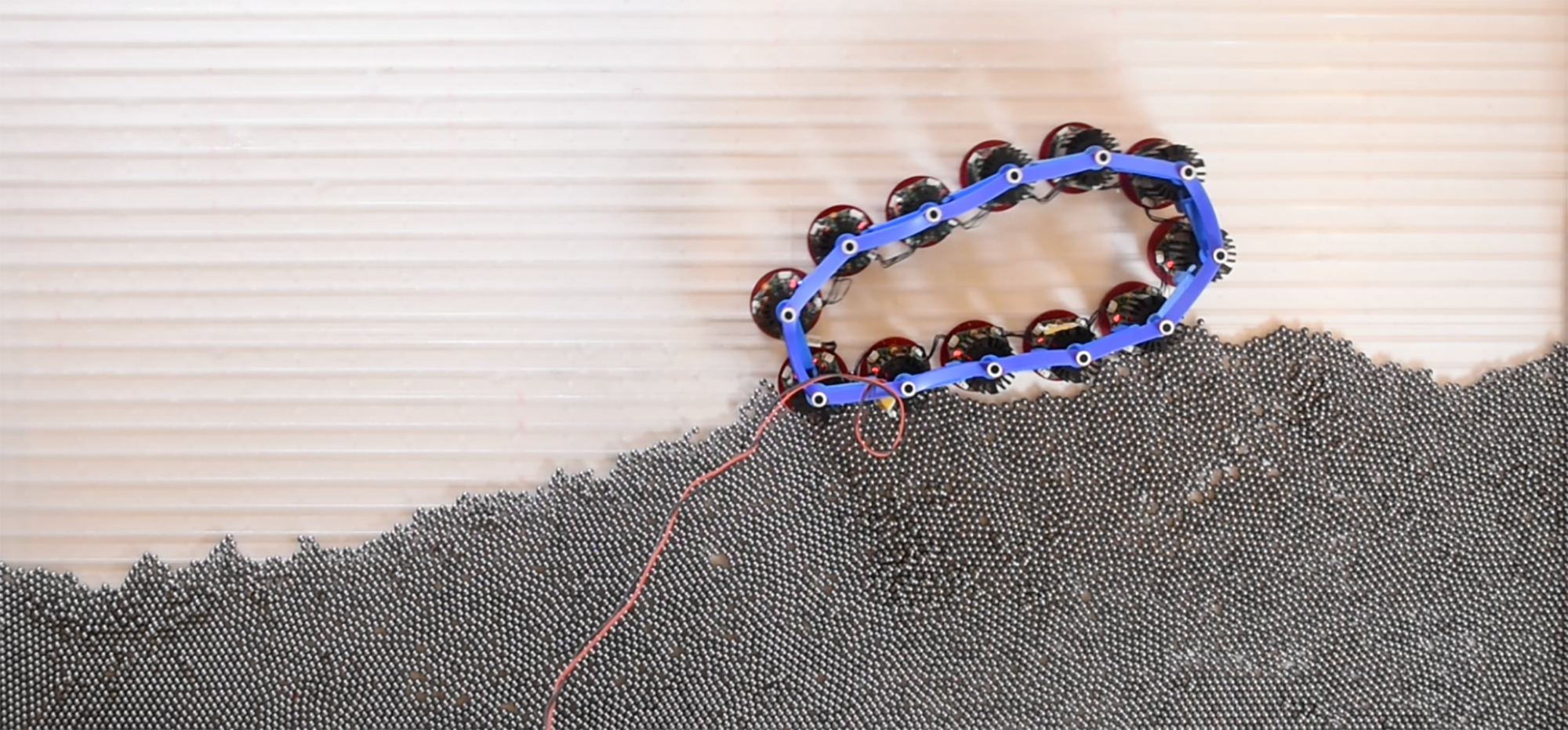
A study coauthored by UChicago physicists Colin Scheibner, PhD’23, and Vincenzo Vitelli, demonstrates that a series of "odd" robots are capable of navigating a variety of terrains—potentially revolutionizing robotic exploration in dynamic environments and offering new perspectives into the evolution of locomotion in animals lacking central nervous systems, like starfish and slime molds. (Photo courtesy Jonas Veenstra)
Robotic locomotion, butterfly mating, and more.
Housing insecurity
New research has found that homelessness is more likely to stem from a slight worsening of already precarious economic circumstances than a large, sudden drop in income. For a recent working paper, researchers, led by Harris Public Policy economist Bruce Meyer, gathered longitudinal information about 139,000 homeless adults (both sheltered and unsheltered) identified in the 2010 Census, including their formal income, employment status, and safety net program participation. The data revealed that these individuals had extremely low incomes in the years before and after they lost housing, suggesting that homelessness usually emerges from long-term precarity rather than an abrupt change in circumstances. Challenging common assumptions about this misunderstood population, the researchers also found that nearly half of the individuals in their sample had some formal employment, and nearly all received some form of safety net assistance. The study offers evidence that can be used to improve anti-poverty programs.
Slide, wobble, and roll
Despite improvements in computing power and artificial intelligence technology, robots that function through a centralized “brain” still struggle to move through unpredictable terrain. A new approach to robotic locomotion links circular motorized components into adjustable shapes—like wiggling strands or flexible hexagons—to harness a phenomenon called “odd elasticity,” where asymmetric forces on the individual parts propel forward movement. As each component interacts independently with obstacles, a feedback loop drives the entire device forward, allowing it to climb hills, traverse sand, and squeeze through tunnels. The decentralized design supports movement even when more than half of the components are disabled. Detailed in a March 12 study in Nature, coauthored by UChicago physicists Colin Scheibner, PhD’23, and Vincenzo Vitelli, these devices could revolutionize robotic exploration in dynamic environments and offer new perspectives into the evolution of locomotion in animals lacking central nervous systems, like starfish and slime molds.
Illuminating
Globally, access to electricity correlates strongly with gross domestic product, but the causal links between electrification and prosperity are not well understood. In research published in the Journal of Political Economy in September, Harris Public Policy’s Fiona Burlig and a coauthor investigated a program to bring electric access to communities in rural India. By comparing villages just above and just below the program’s cutoff size—as well as by comparing similar-sized villages before and after the program began—the researchers were able to isolate the effects of electrification. The results were mixed: Larger villages of around 2,000 people saw significant increases in per capita expenditure, number of firms, and number of firm employees after electrification, while smaller villages of around 300 people did not. This finding, the researchers write, suggests that electrification can indeed help larger communities, while smaller ones might need different interventions to reduce poverty.
Butterfly effect
To predators, a butterfly’s bright wings may signal a toxic meal—but to other butterflies, the colorful patterns may indicate mating compatibility. Male Heliconius cydno butterflies have either white or yellow wing markings and prefer mates that match their coloring. Researchers led by ecologist Marcus R. Kronforst and biologist Stephanie Palmer have traced this preference to one chromosomal region controlling both wing color and visual perception. Genomic analysis identified seven genes that are expressed differently in the eyes and brains of male butterflies, depending on their wing color. Neurobiological experiments revealed that ultraviolet (UV) light perception is suppressed in yellow-winged males, causing yellow females to appear more vibrant, while white-winged males favor the UV reflection of white scales. Published March 11 in PLOS Biology, the study suggests small genetic variations in sensory perception can drive behavioral shifts, providing insights into the link between mating preferences and biodiversity.
